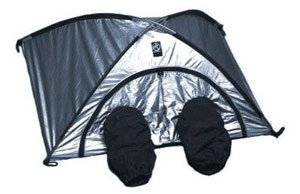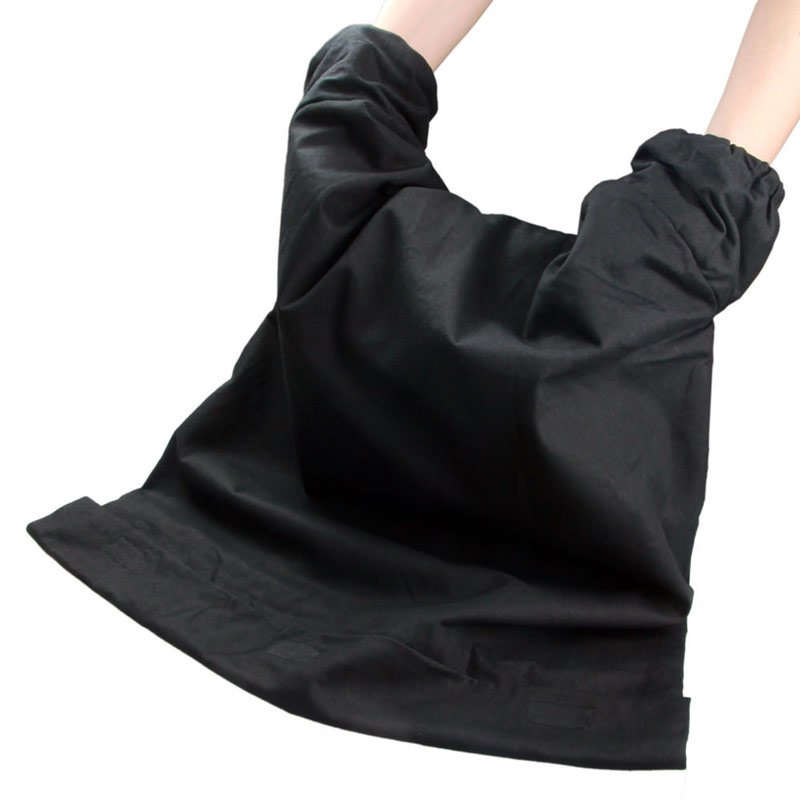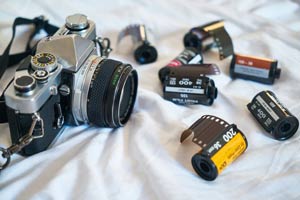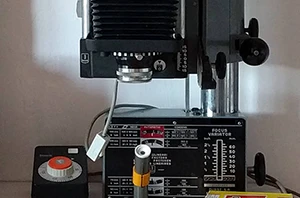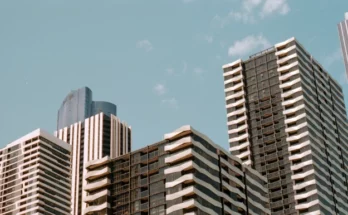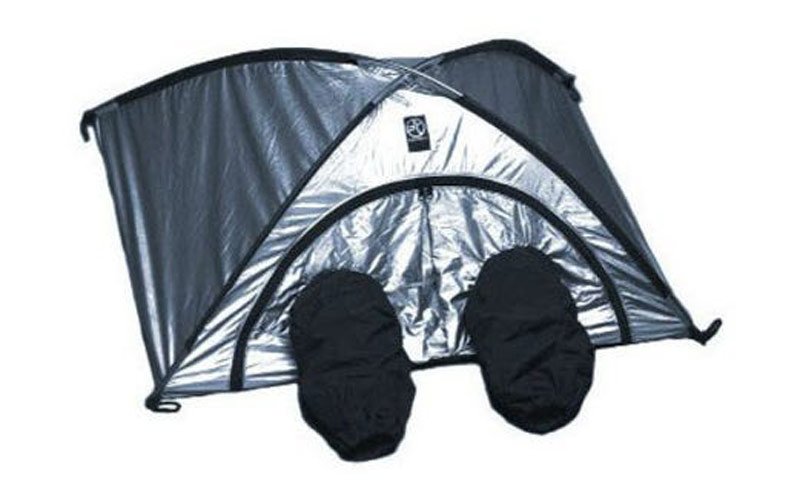
What is a film changing tent?
A film changing tent is a compact light-tight accessory that provides a comfortable, completely dark working space. The tents are used for photographic tasks that normally require a darkroom – loading film holders, bulk loaders or developing tanks. Changing tents come in various sizes to suit different uses but they are all share a similar construction.
Usually double layered, changing tents have a two-fold closures, typically a zipper and a velcro flap over it. They have two sleeves with elastic cuffs through which you can put your arms inside while maintaining lightproofness. Typically, the smaller models are designed to fit 16mm motion-picture magazines or 4×5″ film holders. Larger models accommodate 35mm magazines or 8×10″ still photography holders.
Do you need a film changing tent?
If you often find yourself in need of a dark spot to load up your developing tank or film holders, a changing tent might be useful to you. Furthermore, if you do not have a permanent darkroom setup, but have to rely on blacking out a room, a tent will be quite useful indeed. It can save time, effort and help keep the peace at home.
If you are interested in working with alternative photography processes, a changing tent may be a necessary purchase. Location wet plate collodion photography, for example, requires a dark spot to prepare the plate immediately before shooting. For this, you need a portable solution that is comfortable to work in, which is exactly what a film changing tent is.
A changing tent is also a motion picture film loader’s best friend. If you are expanding your clapper loader kit and look forward to work with 16 or 35mm celluloid, a film changing tent might be a good addition. Get the largest size you might need, you will have a hard time cramming in a 1000′ 35mm magazine in a Harrison 1000 designed for 16mm work.
What is the best film changing tent?
With the film industry being the biggest market for film changing tents, it’s no wonder that the most popular product line was created by camera assistant Patti Harrison. Harrison film changing tents are the defacto industry standard and among the highest quality items you can get. They manufacture tents in several sizes, and the best one for you depends on your needs.
The Harrison Pup Changing Tent (1000) pictured above is one of the smaller models and measures 26″ x 19″ x 12″. According to the manufacturer and user reports it is suitable for work with 16mm motion-picture film or 4×5″ sheet-film. The supporting poles of the tent are removable, so you can leave those at home if you are traveling light and using the tent as a regular changing bag.
If you need more space the Harrison Standard Changing Tent (1001) measures 36″ x 27″ x 14″. It’s a good fit for working with 400′ or 1000′ standard & coaxial 35mm magazines, 5″x7 or 8″x10″ large format film. It has the same construction like the smaller model, with the same removable tent pole design.
For the largest tasks, the company has an even bigger model. The Harrison Jumbo Film Changing Tent (1002) measures 48″ x 28″ x 19″ and can easily acommodate IMAX 65mm motion-picture film or 11×14″ ULF sheet-film.
Some users report the sleeves of the Harrison models too close together. If you have the chance to try them and find them uncomfortable, the Photoflex Changing Room may be a good option. Measuring 25 x 22 x 15″ this tent is comparable to the Harrison 1000. The construction of the Photoflex is a bit different, with sleeves on both sides. Some users report this layout to be more comfortable, while others deem it unusable. The only sure way of knowing which one is right for you is to try both.
Another difference between the Harrison and the Photoflex is the supporting approach. The Photoflex tent is supported by non-removable flexible metal rings, folding and unfolding much like a collapsible light reflector. This might make the tent slightly faster to set up, but you lose the option of removing the supports for lighter packing.
Important: All manufacturers recommend testing the light-tightness of any new film changing tent you purchase. Set up the tent in a dark room and place a strong flashlight inside the tent. Zip it up, put your hands in and methodically check all seams for light leaks.
What are film changing tent alternatives?
Tent vs bag
A changing tent is essentially a film changing bag with a support structure. As opposed to a bag, a tent provides a roomier interior that allows delicate tasks to be performed without fabric plied against your hands. The more spacious interior heats up slower, reducing hand sweating improves comfort.
On the other hand, a typical film changing bag is about a quarter or a third of the price of a comparably sized tent. A tent is also bulkier and heavier to transport, so it might not be ideal for a backpacking setup. To counter this, some tents’ poles can be removed, effectively turning them into changing bags, albeit still at a higher cost. On the other hand, you can put a support like an open sided cardboard box inside a changing bag to simulate a tent. It all comes down to what works for you, your workflow and budget.
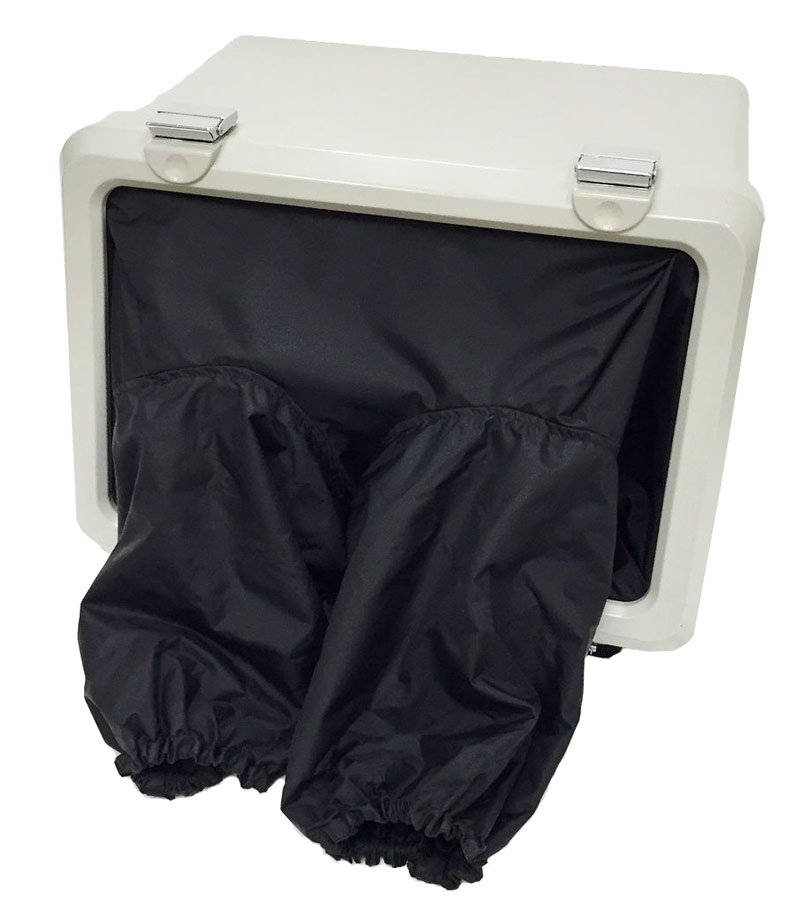
Tent vs box
A film changing tent can be seen as a packable, portable film changing box. In a way, the tent provides the benefits of the box with the portability of the bag. Basically, if you have a tent, you probably won’t need a box as well, unless you need one for a specific purpose.
A changing box can be more suitable for wet processes, like wet plate photography or developing, as any spills can be more easily cleaned. If you are going the DIY route, a changing box is the easiest one of the three options to construct. Furthermore, a box can easily be customized to suit a specific process. For example if you are working with orthochromatic materials, you can install a red safelight filter as a viewing window through which to monitor the process.
Film changing tent storage and maintenance
Because working in the tent for prolonged periods can cause perspiration on your arms, humidity can build up in the tent. This can be further exacerbated if you perform any developing or other wet processes inside the tent. Excess humidity can lead to fabric deterioration or mold. Harrison tents have a known issue with the silver outer fabric of the tents deteriorating from prolonged exposure to high humidity. Be mindful of this, especially if you are buying used.
To ensure long-term performance, it’s important to store the tent properly when not in use. Make sure to wipe up any spills or moisture spots after use. Harrison recommend storing the tent loose (unrolled) in a cardboard box or paper bag. Do not store in a damp area or one that experiences wide temperature fluctuations.

